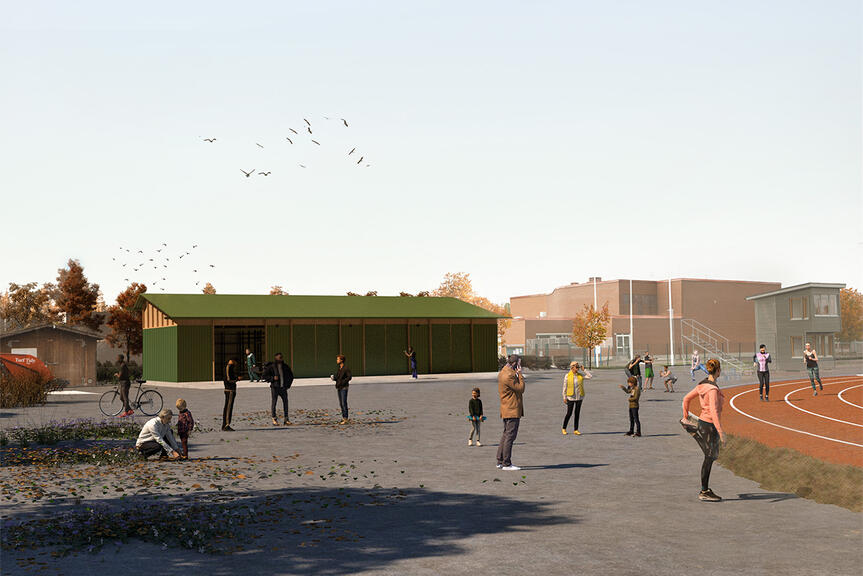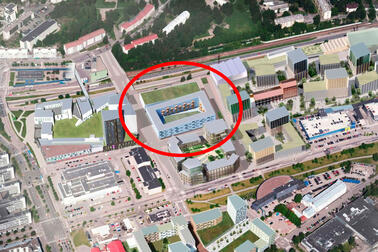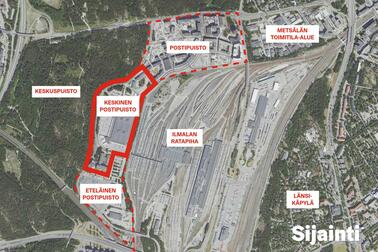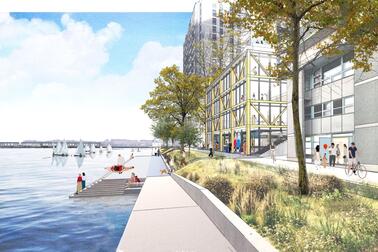
A total of 12 entries were received by the City of Helsinki's and Aalto University's Closing Loops competition. The second and third prizes were shared by Helma and Jatkoerä. Honourable mentions were also awarded to the works 1+z and Säilö. The results of the competition were announced at the City of Helsinki’s Urban Environment House on 2 March.
New storage concept to meet the needs of outdoor sports facilities
The Closing Loops design competition was looking for a low-carbon, resource-efficient, architecturally high-quality and functional storage concept. The aim was to find a replicable solution to replace the temporary use of shipping containers at sports facilities in Helsinki, which currently do not provide sufficient storage space for the machinery and equipment needed at sports facilities.
“Seasonal furniture and equipment, maintenance supplies and equipment and machinery accessories needed in sports areas have to be stored partly in shipping containers or outside protected by tarpaulins. The Cluster Programme for Circular Economy provided an opportunity to investigate whether demolished building parts could be used to build new storage buildings. The competition proposals took into account the needs of outdoor sports facilities and the functionality of the storage buildings quite well,” says Hannu Airola. Project Manager of the City of Helsinki's Culture and Leisure Division's Facility Services.
The competition’s panel of judges considered the Closing Loops design competition to be of a high standard. The first prize-winning Lippa storage building was described by the panel as having a clear architectural design and flexibility in the use of different material flows. Storage functions and user needs had been considered in the work with the help of a careful floor plan. Its working group includes Aalto University students Johanna Saarela and Markus Saarela.
According to Antti Lehto, Assistant Professor of Architecture at Aalto University, who chaired the panel, the winning work Lippa is a reusable and architecturally appealing building that will stand the test of time and work in a variety of environments. Lippa's façade is punctuated by metal cladding, wooden pillars and wooden doors. A ribbon window at the top brings natural light into the storage facilities. The entry makes use of recycled concrete, wood and metal in both the façade cladding and the frame.
The City of Helsinki aims to design and build the first pilot storage building based on the winning concept within the next 18 months. The design is to be implemented in collaboration with the students behind the winning entry.
Circular economy an important theme in resource-efficient construction
A wide range of reusable building materials were highlighted in the competition entries. Some of the entries were based on materials, others on the look of the façades. In particular, the panel identified clear potential for further development and replicability in the winning concepts.
“The reuse of building materials is an important research topic related to the development of low-carbon and resource-efficient construction. The number of different solutions to the exceptionally challenging design task and the high quality of the entries received in the Closing Loops competition was very pleasing,” says Assistant Professor Antti Lehto.
Helsinki a pioneer in the circular economy of construction
According to its urban strategy, the City of Helsinki wants to invest heavily in testing, developing, piloting and scaling up innovations in a real urban environment. Helsinki's Cluster Programme for Circular Economy addresses issues related to the reuse of demolition materials through various experiments and pilots. The Closing Loops design competition with Aalto University is one of the cluster programme's projects that collaborate with businesses, research institutes and city divisions to promote the circular economy.
“The city wants to be part of the solution to major global challenges such as climate change and the overuse of natural resources. In the Cluster Programme for Circular Economy, we can implement new circular economy models in construction and thereby boost business in the sector. It's great that students are interested in non-traditional design competitions,” says Paula Miettinen, Head of Unit, Business Services, at the City of Helsinki.
The works of the Closing Loops competition will be on display at the City of Helsinki's Urban Environment Division in Kalasatama (Työpajankatu 8, 00580 Helsinki) from Friday 3 March throughout the spring.


